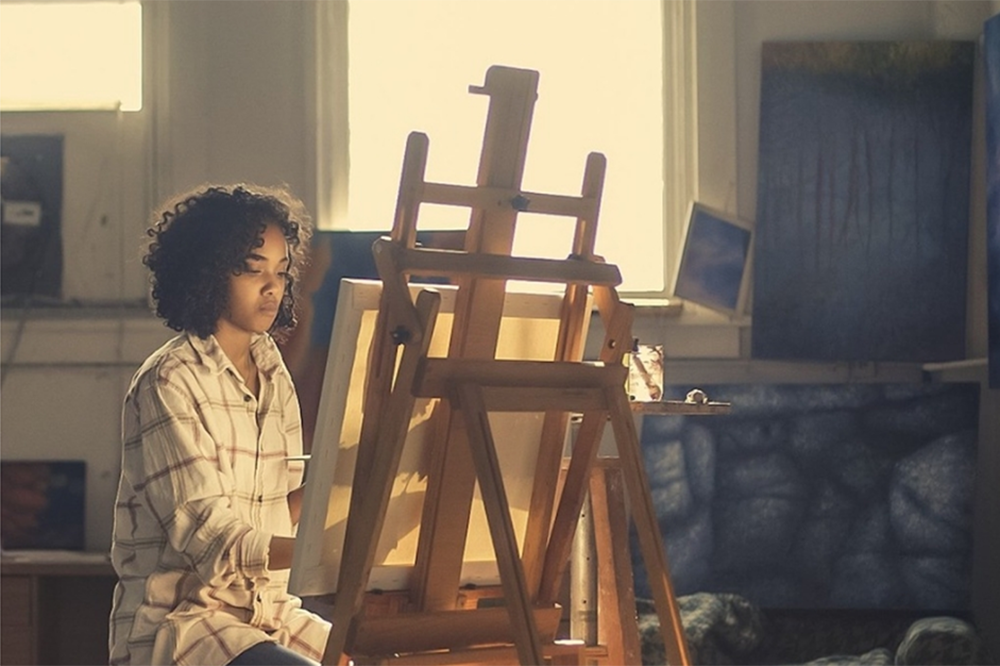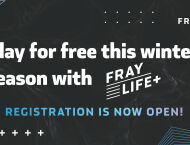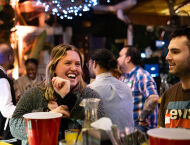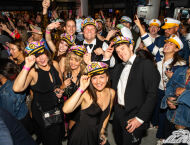Culture
 Photo from www.gwtoday.gwu.edu.
Photo from www.gwtoday.gwu.edu.
Care for Creatives Offers Mental Health Services to the Arts Community
August 31, 2020 @ 5:38pm
Everyone is experiencing unique stressors as a result of both the ongoing pandemic and social and racial unrest across the nation. While some people have support systems in place to help them cope, many others are struggling to quell a rising tide of anxiety. And for those who may not have extra cash on hand – particularly now – to spend on mental health resources, surviving the foreseeable future is a daunting task. But the DC Office of Creative Affairs and the George Washington University’s Community Counseling Services Center are working to make mental health care accessible and affordable, especially to a sector of the population that may need help the most.
Artists, designers, musicians, chefs, performers and a host of other professionals in what have become known as “creative industries” often work under conditions that even in the best of situations can increase susceptibility to mental health risks. One study in Northern Ireland found that depression is three times more likely to occur in people working in creative industries. Long hours, physical and emotional exertion, and a sense of responsibility to be a conduit for others’ emotional experiences can all take a toll. Add struggling to pay rent for studio space and housing – often living project-to-project or depending on income from side jobs – and the creative life, while enriching, can be downright exhausting.
These days, financial insecurity is an especially significant stressor for creatives; the economic impact of COVID-19 on culture and the arts is devastating. A new report from the Brookings Institute estimates a loss of nearly a third of creative industries jobs and more than $150 billion in sales of goods and services in the sector nationwide, with musicians and those in the performing arts hit the hardest.
Maryann Lombardi, the Associate Director of DC’s Office of Cable TV, Film, Music and Entertainment (OCTFME) Creative Affairs Office (CAO) knows this first hand. She has made it a personal and professional mission to support our city’s creatives, in good times and bad. Through her work spearheading city-sponsored initiatives like the 202Creates residency program and others, Lombardi has regular contact with creative industries workers who have expressed a need for affordable mental health resources.
“The need for mental health support comes up consistently throughout the creative community and in conversations that we’re having,” says Lombardi. “It’s always been something that I’ve thought about, but didn’t know what our role would be in trying to be a resource or a service or support for folks who are seeking help. And once Covid-19 started it came up more and more.”
That’s when Lombardi approached her friend and colleague, Dr. Mary DeRaedt, who is the director of the Masters of School Counseling program at the George Washington University. One of the ways DeRaedt and her students provide care is through the Community Counseling Services Center (CCSC), a unique clinic at GW that offers pay-what-you-can services to community members and students in the greater Washington metropolitan area.
Together, Lombardi and DeRaedt developed the Care for Creatives partnership between the CAO and the CCSC to offer affordable mental health support geared especially to creatives, via tele-health visits.
“There was such a synergistic moment in terms of talking about this process, especially in context of Covid, but also long-term, not just because of Covid,” says DeRaedt. “The idea that low-cost, accessible mental health care is hard to provide for people and here we have a specific clinic for our Counseling program that anyone in the community at any time can use, [Care for Creatives just made sense].”
Creatives who reach out to the CCSC are matched with a clinical intern from the Graduate School of Education and Human Development to support them through a solution-oriented therapy approach.
DeRaedt, who supervises the students in the clinic, says the model they are using differs from traditional therapy models in that it is designed as a short-term, six-session, solution-focused approach that incorporates some expressive arts techniques to address the needs of the particular community being served. For the students, it gives the added benefit of being trained in different modalities of therapy.
“When both the intern overcomes their anxiety about suggesting an art activity and the client overcomes their insecurity about using it, it has been beautiful,” says DeRaedt. “People have had really amazing responses to using painting and poetry and writing. But what has been interesting is that people that have come in with one area of focus in terms of their creativity, have found using a different area has been really useful.”
Erica Suh, a PhD student in the program, volunteered her services all summer, which, she says, “has been one of the most rewarding experiences in [her] career.”
“Care for Creatives gives such a different and fresh perspective to crisis care. It allows us to serve a larger population, provide a unique approach to therapy, and support the creative community in this pandemic using the strengths they already have,” says Suh.
In addition to affordability, the accessibility of the tele-health visits allows creatives to meet providers where they are – literally – without constraints of having to physically get to the clinic. Lombardi says in addition, the brief approach has received positive response from participants because it includes immediately actionable steps. And if after the six-session treatment ends, creatives feel they need additional support, they have the option to continue seeing a clinician or come back another time.
Supporting creative workers’ mental health doesn’t just impact individuals – it contributes to the overall vitality of the country. According to the National Endowment for the Arts, the value-added to the U.S. GDP by arts and cultural production is nearly five times greater than that of the agricultural sector.
The creative economy in D.C. has been an especially critical part of our city’s growth and production over the past decade and a half. As of 2014, across four sectors: arts and heritage; culinary arts; information and technology (largely focused on media); and professional services (specifically, creative professional services, such as architecture, graphic design and fashion design), creative industries accounted for 124,000 private sector jobs, or 16% of DC employment. And, from 2015 to 2016, growth in the arts and heritage sector was 50%.
And while the Care for Creatives program seems like a win-win, simple and effective way to support individuals who contribute so much in so many ways to the broader community, it is so far, one of a kind. This is in part because, according to DeRaedt, GW’s community clinic is a relatively rare resource. Many other university counseling programs are only able to serve students from within the university.
“The model is unique, and it’s one of the reasons that I’ve been spending a lot of my time talking to other cities, especially cities that have strong, active creative communities, to see where there is an interest in partnering in the scalability of the program,” says Lombardi. “Especially with the use of tele-health, it really opens up the door to be able to do this program in a variety of jurisdictions, supporting communities very widely.”
Community members who would like to receive care from #CareForCreatives can email [email protected] to be paired with a clinician.







